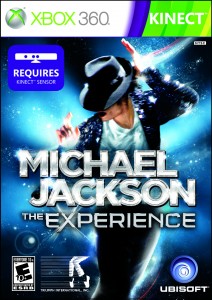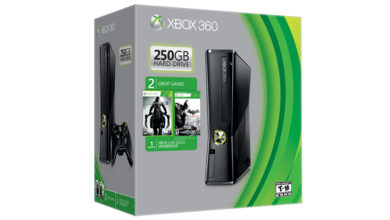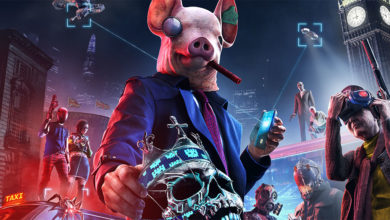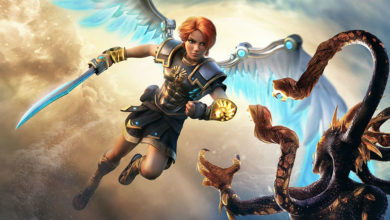Who doesn’t love Michael Jackson! Random eccentricities aside, the man could sing and dance up a storm. He also bought a degree of respectability to pop music and paved the way for a greater number of black artists to break into the mainstream. As a cultural cornerstone of my ever so colourful childhood, I was more than excited at the thought of getting to play Ubisoft’s Michael Jackson: The Experience (referred to as MJX from here on out) on the Kinect.
[singlepic id=2629 w=450 float=center]
Unlike the Wii and PS3 versions, which utilised the Wii-mote and the Playstation Move respectively, and therefore only really tracked the movements of your arm, the Kinect version was built using the same technology employed in Your Shape: Fitness Evolved (also by Ubisoft). As in that game, and unlike Harmonix’s Dance Central from last year, MJX transposes your physical form (warts, bad fashion and all) into the game, either putting you on stage right between a set of backup dancers or on your own. While this may sound better than Dance Central’s pre-rendered character mimicking, it honestly isn’t. For one, there’s no visual feedback at all to show you what moves you’re getting wrong or extremities you’re waggling incorrectly. You’re left to your own devices to figure out why you’ve dropped ratings while performing the same move consecutively, which in turn makes your dancing (and effort) feel arbitrary. Sadly, this is just one in a cascade of issues that should have been caught early in the game design process.
The dance moves you are tasked with performing aren’t as easy to pull off as the ones in Dance Central. It’s painfully evident that the developers motion-captured random Michael Jackson impersonator moves without giving a thought to how those moves would work within the context of a game. Instead of being stacked and paced perfectly as in Dance Central, you’re given the almost impossible task of following whole sequences on screen that move too fast and don’t give amateurs enough time or breathing room to mimic. The flashcards from Dance Central have been (rightly) borrowed, but they don’t work with routines that move so quickly. You’ll see your next move being performed on screen even before you’ve had time to work out what the current moves’ flashcard requires you to do. It’s disconcerting to say the least, and not much fun.
[singlepic id=2631 w=450 float=center]
There are also pauses between routines where you just stand around waiting for the game to give you something to do. Not only is this perplexing, but it also ruins whatever momentum you had built up till then. Its only when you venture into MJX’s barebones multiplayer mode than you realize what the pauses are for. If you have a partner to dance with in either the cooperative or competitive game modes, the pauses allow you to switch spots between yourselves. This is fine in theory, but why oh why would you use the same pauses in the single player mode as well? It smacks of lazy shortcutting.
You’ll also have all 30 songs unlocked from the start, killing any sense of player progression. While 30 hit tracks may seem like a good deal on paper, what they don’t tell you is that some of these songs are singing-only. Yes, the game lets to sing. What could have been a real coup de-grâce instead becomes another ill thought out feature. Not only are some songs restricted to singing, but certain tracks are an ungodly mishmash, where you must sing and dance in quick succession. It’s inelegant to say the least, and the game isn’t smart enough to tell the difference between singing and humming in tune (bringing to mind the similar tracking errors in dancing I brought up earlier). You know there are serious issues with the game when you can sit on your couch and hum along and get pass scores in both singing and dancing.
[singlepic id=2627 w=450 float=center]
Why is this game still worth a look, then? For Michael Jackson. There are 30 brilliant songs to enjoy, and each song has an individual stage crafted for it with motion-captured background dancers, crowds and video overlays, making the experience quite pleasing to the eye. There are also some neat touches, with MJ’s image being transposed onto yours when you pull off an iconic move. The game also slides you across the screen when you attempt a moonwalk, which is a really neat touch and always makes the room smile. You just may be able overlook the flaws if you’re a die-hard MJ fan. After all, you don’t need a score to enjoy dancing to a great collection of songs, especially with company. There’s a training mode (in name), which is simply a collection of videos of dancers showing you how to perform Jacko’s iconic movies. Videos are just videos though, and with zero interactivity (you can’t even scrub forward or back), you’ll likely never use them. It also isn’t much of an ‘Experience’ when there are no Michael Jackson unlocks to the found. No Jackopedia, no videos, nothing.
Conclusion
Michael Jackson: The Experience doesn’t appear to be well thought out enough to pose a credible challenge to Dance Central. Kinect-dancing can be amazing fun as Harmonix’s classic showed, and which Ubisoft no doubt caught on to. Unfortunately, there’s more to making a great dance game than slapping a killer license on and mo-capping dance moves. While there’s fun to be had here, it’s mostly because of the inherent joy in dancing and singing to Michael Jackson classics. This one’s only for die-hard fans.




